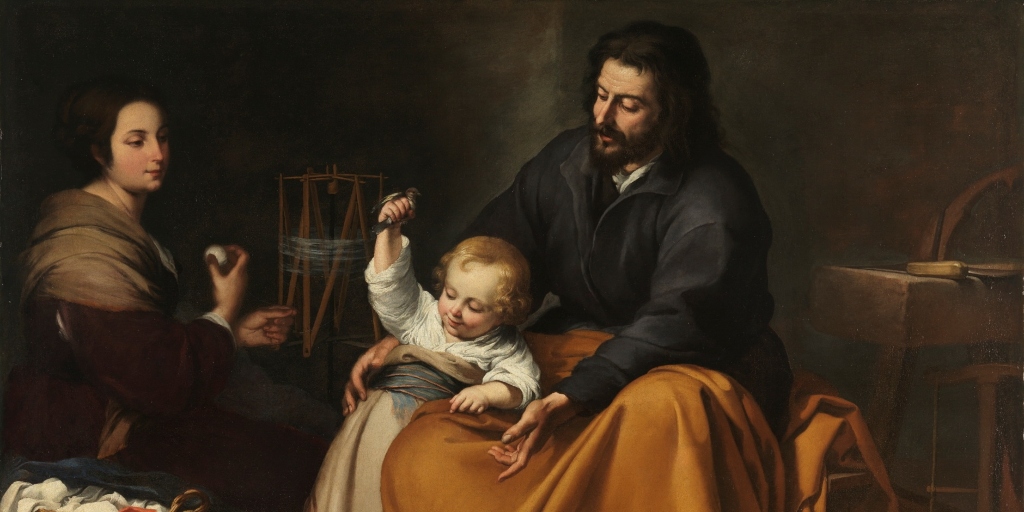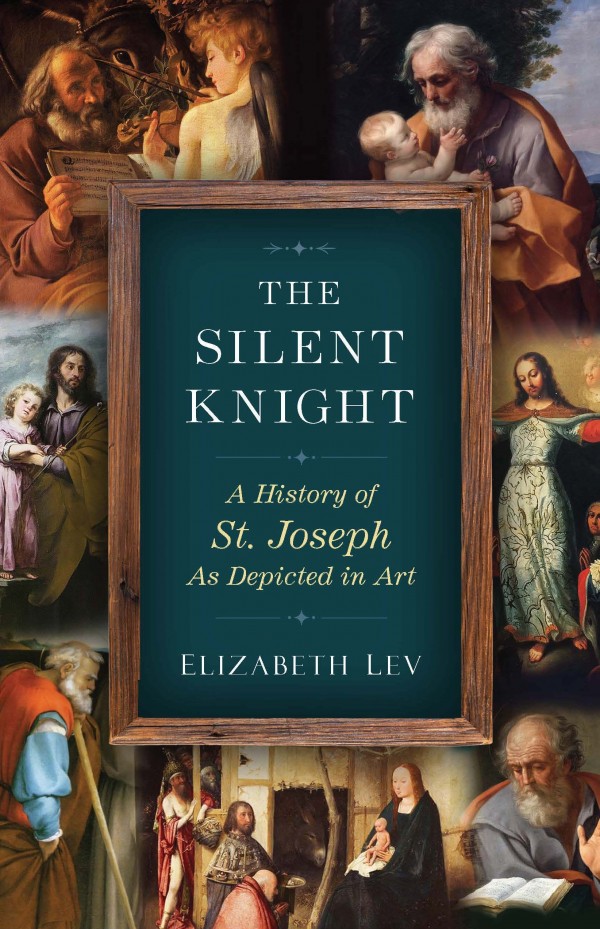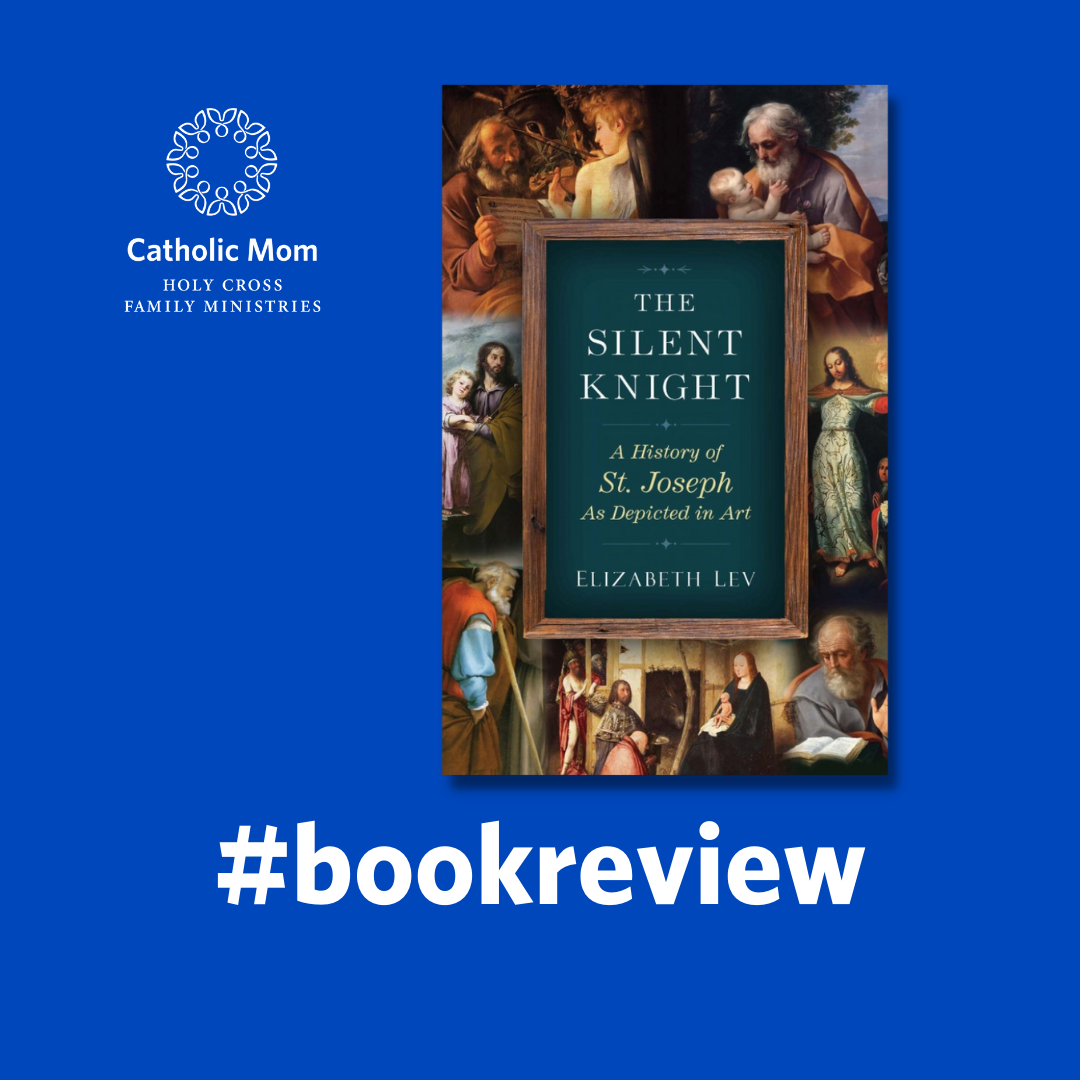
Charlene Rack reviews Elizabeth Lev's new book, The Silent Knight: A History of St. Joseph As Depicted in Art.
I took on the challenge of this book review as a writer who is embarrassingly unskilled (and unschooled) in art. Tone-deaf people use the phrase, “I couldn’t carry a tune in a bucket.” Well, I can’t draw water in a pail! But it turned out fine, because Elizabeth Lev is a gracious and patient teacher, able to make the information in The Silent Knight: A History of St. Joseph As Depicted in Art easy to understand for beginners like me, while also relevant to the “real” artists among us.
I have a very talented artist friend/art teacher, with a master's degree in visual arts education (her thesis was on teaching art according to classical education principles) and when I told her I was reviewing this book, she replied, “I love, love, LOVE Liz Lev!” That comment galvanized me to take on this book.

In her book, Lev offers to “accompany us through the artistic wonderland (of Josephine iconography), bringing to light the different trends of “veneration and created imagery.” Through this guided tour, you’ll discover and study images that “excite both prayer and emulation, (which is) the true purpose of religious art.”
My tour through Lev’s The Silent Knight (Sophia Institute Press) was a stroll through a Catholic art museum with the perfect docent. It was delightfully challenging, with thoughtfully curated prints of beautiful and enlightening artwork, including art reproductions, icons, and photographs of reliquary boxes, mosaics, carved Gospel covers, etc., all presented in a rich, historical context. I learned many new and interesting tidbits and most importantly, I feel as though I have a much better understanding of St. Joseph and his important role in salvation history.
I found it interesting that St. Joseph was not even depicted in art until the fifth century, and I appreciated Lev’s insight on the reason for the apparent snub. She pointed out that with heresies, and conflicting viewpoints, it was more important that art focused in on the truth that Jesus was the Son of God, the Messiah. In those earliest days of Catholic art, having Joseph in the picture might have distracted from what the Church felt most important for the faithful to grasp. And so, Joseph humbly stepped back, earning the title of “‘the elusive saint,’ patiently waiting for his time to shine.”
Once the artists picked up the trail of our humble saint, depictions were varied as related to different traditions and eras. Some artists gave us a very old, gray-haired Joseph, while some presented him as young and strong. Artists at times even portrayed Joseph as a somewhat comical figure, which only endeared him more to the faithful. (The story of the relic of St. Joseph’s pants was my favorite surprise, and also a relic that caused some of the comedic portrayals!) My best-loved rendition of the Holy family (which I have hanging on my living room wall) is The Holy Family With a Little Bird. The artist, Bartolomé Esteban Marillo, emerged recently as my new favorite artist. He always portrays St. Joseph as a young man, and the Holy Family as real people. Marillo was mentioned, and his images shared, more than once in this book, so that raised my artistic savviness score slightly, in my own esteem.
.jpg?width=1880&name=Sagrada_Familia_del_pajarito_(Murillo).jpg)
As depictions of the foster father of Jesus transformed to that of a young, bold and dependable figure, St. Joseph’s vocation of leading the Church in a clearer understanding of fatherhood and Christian marriage became more authoritative. Today we see him stepping out more boldly than ever, coming out of the shadows with many books being written about this champion of masculinity, fathers, and family life. Lev’s book, with its unique and insightful approach, is a wonderful addition to the current championing of this essential saint, whose example and intercession we now need more than ever.
Elizabeth Lev encourages us to not limit ourselves to the many bland and mass-produced statues and images of St. Joseph, because “there are many more marvelous Josephs yet to meet.” And you will find many of them in The Silent Knight!

Copyright 2022 Charlene Rack
Image: Bartolomé Esteban Murillo, Public domain, via Wikimedia Commons
About the Author

Charlene Rack
Charlene Rack grew up in the "heartland," moved south to Cincinnati, married a Catholic man, converted to Catholicism, and had three children. Along the way, she's planned many mission trips, youth groups, and pilgrimages to the March for life for teens and young adults - all carried out with her goofy sense of humor and her enthusiastic sense of adventure. Read her blog at Grandma’s Coffee Soup.


.png?width=1806&height=731&name=CatholicMom_hcfm_logo1_pos_871c_2728c%20(002).png)
Comments